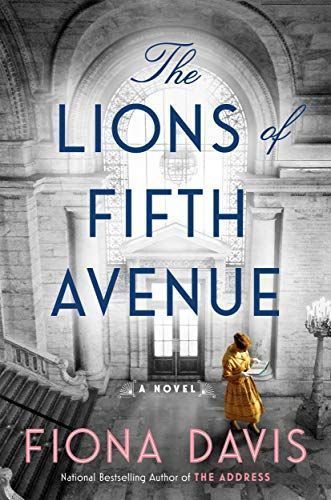
The Lions of Fifth Avenue A Novel
A Good Morning America Book Club Pick and New York Times bestseller! "A page-turner for booklovers everywhere! . . . A story of family ties, their lost dreams, and the redemption that comes from discovering truth."--Adriana Trigiani, bestselling author of The Shoemaker's Wife In New York Times bestselling author Fiona Davis's latest historical novel, a series of book thefts roils the iconic New York Public Library, leaving two generations of strong-willed women to pick up the pieces. It's 1913, and on the surface, Laura Lyons couldn't ask for more out of life--her husband is the superintendent of the New York Public Library, allowing their family to live in an apartment within the grand building, and they are blessed with two children. But headstrong, passionate Laura wants more, and when she takes a leap of faith and applies to the Columbia Journalism School, her world is cracked wide open. As her studies take her all over the city, she is drawn to Greenwich Village's new bohemia, where she discovers the Heterodoxy Club--a radical, all-female group in which women are encouraged to loudly share their opinions on suffrage, birth control, and women's rights. Soon, Laura finds herself questioning her traditional role as wife and mother. But when valuable books are stolen back at the library, threatening the home and institution she loves, she's forced to confront her shifting priorities head on . . . and may just lose everything in the process. Eighty years later, in 1993, Sadie Donovan struggles with the legacy of her grandmother, the famous essayist Laura Lyons, especially after she's wrangled her dream job as a curator at the New York Public Library. But the job quickly becomes a nightmare when rare manuscripts, notes, and books for the exhibit Sadie's running begin disappearing from the library's famous Berg Collection. Determined to save both the exhibit and her career, the typically risk-adverse Sadie teams up with a private security expert to uncover the culprit. However, things unexpectedly become personal when the investigation leads Sadie to some unwelcome truths about her own family heritage--truths that shed new light on the biggest tragedy in the library's history.
Reviews
Patricia Nelson@tnelson577
Vilandra@vilandra
Kristen Claiborn@kristenc
Celeste Richardson@cecereadsandsings
Liv Rockwell@lvrock13
erin s@sirissacgluten
Heather Harrington@nerdybynatureblog
Amy Medeiros@bookworm4tea
Diane Calello@drdianec
Robin M Cabana@rmcabana
Hannah Gogan@hannahgogan
Katrina Meyers@motherofallbookdragons728
Caitlin Hooker@chooker
Jessica Ford@jessford
Jennifer Papa@jennifer_papa
Emily@emilydill
Kay Jamieson@kayjamieson
Jessica Post@jesspost
Malgorzata Olszewska@bookwarden
Sarah Smith@sesmith
Jeanie Cha@ahceinaej
Elizabeth Alfiero@ealfiero17
Kendra Negron@kendra
Kristen Flynn@kristenflynn